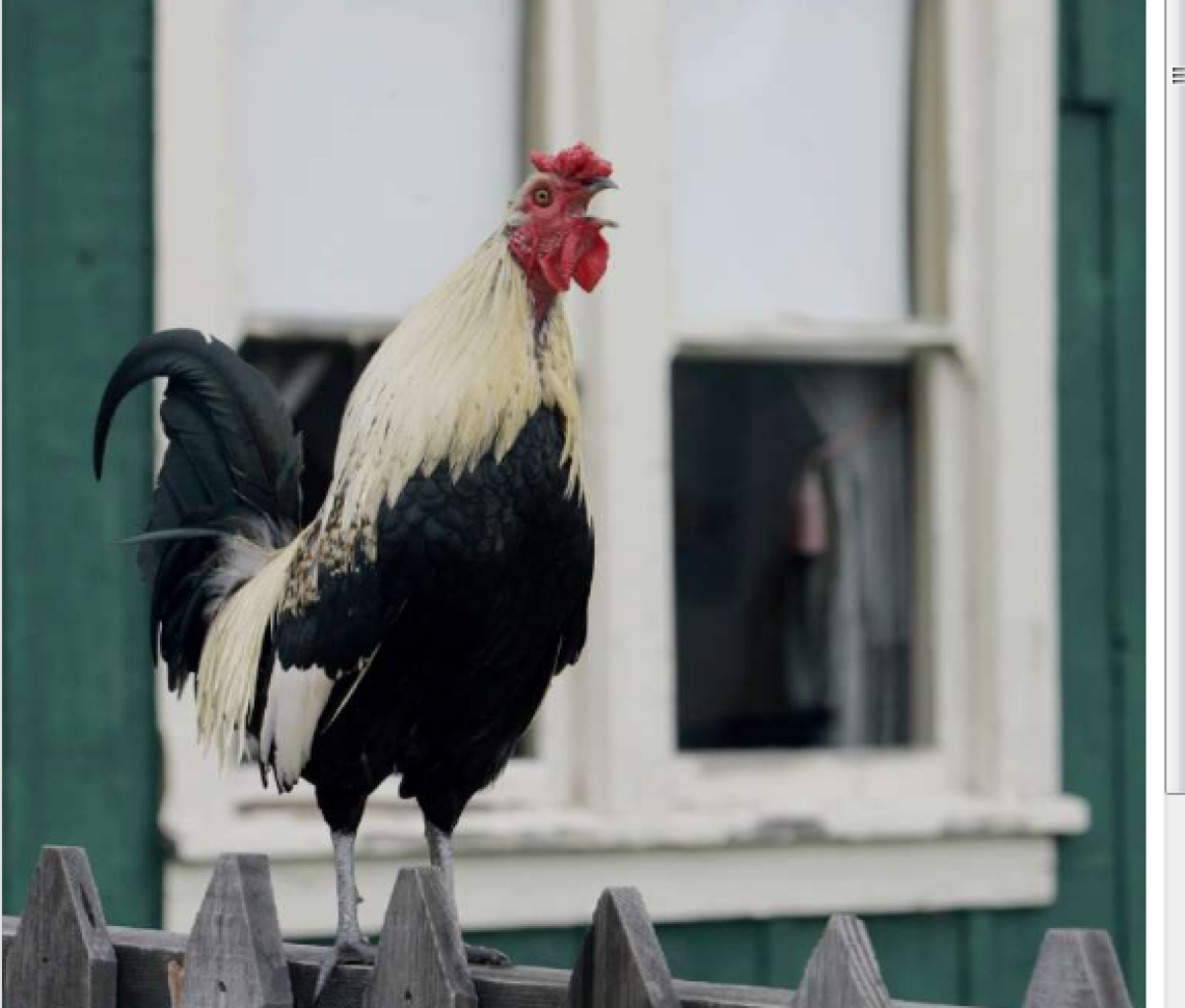Cock-a-doodle-doo! Scientists wonder why the rooster crows

- Share via
Roosters, famously, crow in the early morn -- but scientists don’t fully understand why they unleash their voices when they do.
After all, roosters have also been known to make a racket when other animals or birds are about, when a car starts, or when lights turn on in the middle of the night. So do they crow because they see the morning light, or because they hear other roosters? Or do they have some kind of internal body clock that lets them know that’s it’s time to unleash their peals?
Animal physiology researchers Tsuyoshi Shimmura and Takashi Yoshimura of Nagoya University in Japan decided to try to find out.
The scientists put three different groups of four roosters in light- and sound-tight rooms, recording their “cock-a-doodle-doo” -ing -- or “ko-ke-kok-koh” -ing, as the Japanese would say -- with sound recorders and video cameras.
When the roosters were subjected to cycles of 12 hours of light and 12 hours of dim light, the birds crowed about two hours before the lights came on. In conditions kept constantly dim, the roosters also continued to vocalize early in the “morning,” suggesting that their internal body clocks, or circadian rhythms, were involved in timing their crows at dawn.
Hoping to also gain insight into the relationship between body clocks and external stimuli, the team investigated further, checking to see if shining lights on the the birds or piping sound into their enclosures also caused them to crow. It did -- but again, the roosters were more likely to sing in the early day than later on, again suggesting circadian rhythm involvement.
In a statement, the researchers said they hoped to understand the innate calls of a variety of animals that don’t learn their vocalizations as humans or songbirds do.
“We still do not know why a dog says ‘bow-wow’ and a cat says ‘meow,’” Yoshimura said, adding that studying chickens might provide a good way to explore these genetically modified behaviors.
The research was published Monday in the journal Current Biology.






